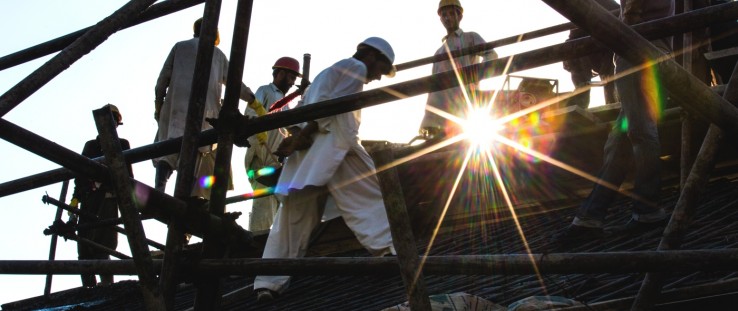 As schools and medical buildings were reconstructed following a 2005 earthquake in Pakistan, surrounding communities were realizing hope for the future.
USAID
As schools and medical buildings were reconstructed following a 2005 earthquake in Pakistan, surrounding communities were realizing hope for the future.
USAID
 As schools and medical buildings were reconstructed following a 2005 earthquake in Pakistan, surrounding communities were realizing hope for the future.
USAID
As schools and medical buildings were reconstructed following a 2005 earthquake in Pakistan, surrounding communities were realizing hope for the future.
USAID
On Oct. 8, 2005, a 30,000-square-kilometer mountainous region in northern Pakistan was struck by a catastrophic 7.6 magnitude earthquake that left 75,000 people dead and more than 3.5 million homeless. Nearly 600 health facilities, 1,500 education buildings, water supply lines, roads, bridges and other infrastructure were also destroyed.
As the buildings fell, people scrambled to get out safely—many unsuccessfully. Those who succeeded live with physical and psychological scars.
Muhammad Irfan, who was a secondary school student at the Boys High School Pinyali Village in Azad Jammu and Kashmir (AJK) at the time, recalls: “When the earthquake struck, I fell down in the stampede and then my school building collapsed. I was lucky to survive but got wounded badly. Since then, we have been studying under the sky. I was scared by the idea of stepping inside a building.”
For Irfan and thousands like him, the future looked bleak. Immediately after the earthquake, the Government of Pakistan was joined by U.N. agencies, NGOs and the international community to aid survivors. USAID launched the multi-year Pakistan Earthquake Reconstruction Program, initially a five-year, $120 million effort to reconstruct schools and health facilities. In June 2011, the program added $17 million to reconstruct additional schools.
“USAID’s reconstruction activities were unique [in that they included] significant community involvement—probably the first time that an infrastructure development project in Pakistan took the community onboard,” said Shahab Hamid, program manager of the District Reconstruction Unit from Pakistan’s Mansehra district of Khyber Pakhtunkhwa province. “This helped the project and revived the spirit of the communities. They took ownership of this reconstruction project.”
USAID assured people that the reconstructed buildings in the region were earthquake-resistant, which helped to build their confidence in the structures. The project conducted social feasibility studies and enlisted the community’s involvement before sites and structure designs were selected.
Committees for school and health management were formed as well as parent-teacher councils. Agreements were signed by the community committees and contractors to minimize conflicts. The agreements also created community trust in the quality of the new buildings and the process.
Throughout all phases of the project, public meetings soliciting community input, review, and agreement on final designs were conducted. The result was strong community ownership in maintenance, use and sustainability of the buildings.
“One of the most important decisions in designing the earthquake reconstruction program was to include a cultural anthropologist familiar with rural Pakistan as one of four key personnel in the construction contract. Reconstruction is not just about bricks and mortar but rebuilding communities and the people who occupy them,” said Robert MacLeod, former director of the USAID/Pakistan Earthquake Reconstruction Office.
USAID’s work in rebuilding after the 2005 earthquake is only one example of the Agency’s extensive and decades-long work in humanitarian assistance efforts in Pakistan.
“Since 2009, support for humanitarian assistance in Pakistan has accounted for $1 billion, or one-third of total USAID funding, making the United States the largest bilateral provider of civilian humanitarian assistance in Pakistan,” says Gregory Gottlieb, USAID/Pakistan mission director. “In the wake of the July 2010 floods, the worst in more than 80 years in the region, USAID vaccinated 7 million children to prevent the outbreak of communicable diseases. Our agriculture assistance reached 25 percent, or 4.5 million, [of] people affected by the floods. The U.S. support, through USAID, has played a key role in reviving the social, economic and governance fabrics of many of the communities that are prone to, and are frequently affected by, natural disasters across Pakistan for many years, and USAID has been, and continues to be, an active partner in the Government of Pakistan’s rehabilitation efforts.”
This partnership with USAID was very valuable for the Earthquake Reconstruction and Rehabilitation Authority (ERRA), which was established by the Government of Pakistan to respond to reconstruction needs after the 2005 earthquake.
“ERRA profoundly acknowledges the support provided by the people of United States who, through USAID, generously contributed $200 million for rebuilding schools and health facilities destroyed by the earthquake, besides medical and social relief that helped 2.6 million survivors return to their life after the earthquake,” said Brigadier Syed Wajid Raza, ERRA’s chief of staff.
USAID’s reconstruction and rehabilitation activities in the earthquake region also generated economic activities for local laborers, masons, carpenters and other entrepreneurs who provide related services such as building materials, transportation and even small road-side tea stalls.
For Gul Zaman, chairman of the School Management Committee at Government Girls High School, Dhal Qazian, AJK, the whole process was almost therapeutic.
“The difference between this new building and the one that collapsed is huge,” said Zaman, who runs a small construction business in the village and whose two daughters attend one of the new schools. “I have been closely involved during the reconstruction process and I have never seen such a strong mixture of steel and concrete, good enough to sustain severe quake shocks. Many buildings were handed over before the deadline; it’s unusual in the history of construction in our area. We can only thank USAID for saving our future generations.”
Related Links
Reconstruction by the Numbers
All told, 77 facilities, which cover an area of over 1.1 million square feet, were reconstructed under the USAID program, most in remote locations with an average altitude of 5,500 feet. The 61 reconstructed schools are larger than the original structures and consist of 658 classrooms, 121 science laboratories and 701 toilets. Approximately 18,000 students from 556 villages with a combined population of 800,000 people are benefiting from the schools.
Rebuilt health facilities serve over 300,000 people. The 51-bed hospital at Bagh—with six wards, including emergency, gynecology, intensive care and pediatrics—is considered one of the best medical facilities in the region. Its outpatient department serves 200 patients daily and benefits a population of 80,000.
Designs used computer-based calculations, 3-D modeling and simulations to meet international building codes. Septic tanks and soak-away pits that dissipate rainwater into groundwater were provided to minimize environmental impact, and architects planned around trees to avoid their destruction. Maximum use of natural light, cross ventilation and access for people with special needs were ensured.
Over 200 local Pakistani staff, four local architectural and engineering design firms, 12 local construction contractors, and over 250 local suppliers were hired by the program, resulting in a positive economic impact on the region. After completion of the project, USAID handed over a pre-fabricated building used as the project office, along with its equipment and furniture, to the newly established First Women’s University of AJK.







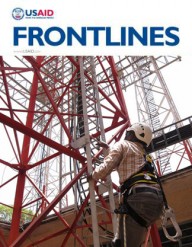

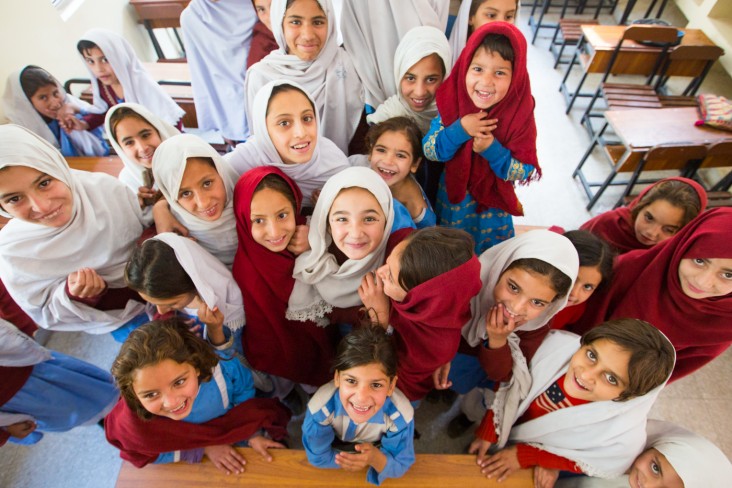
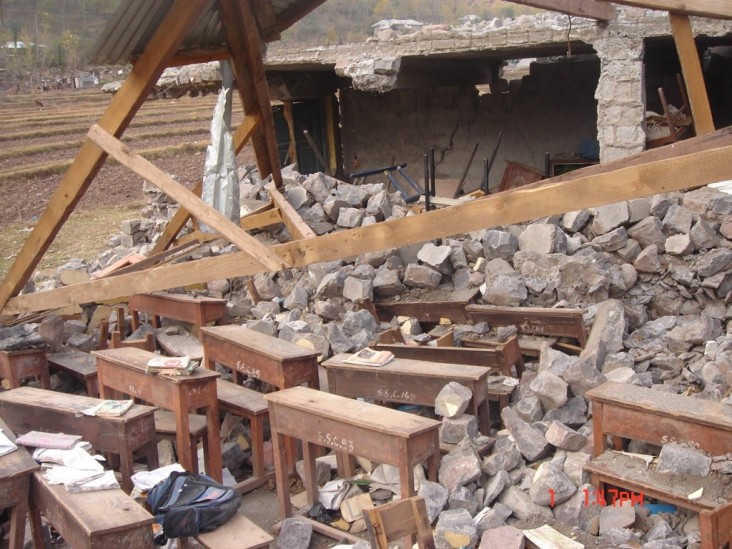
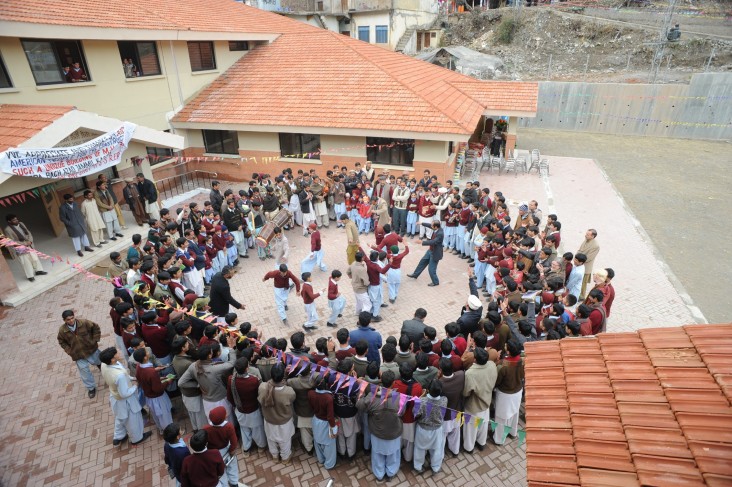
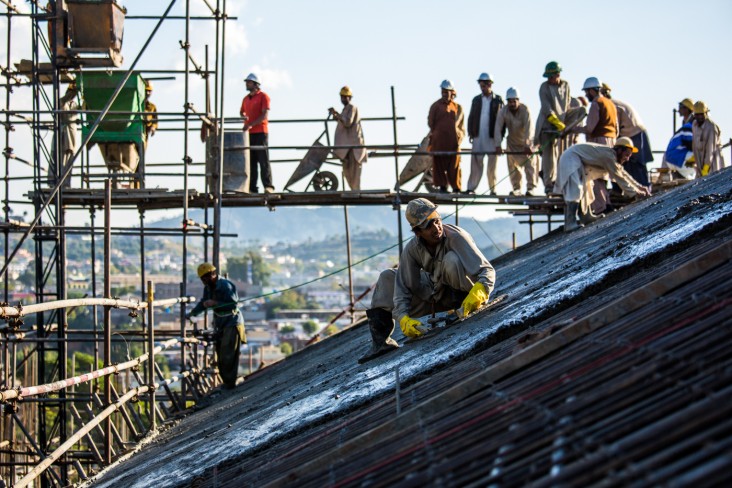
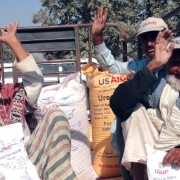
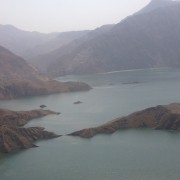
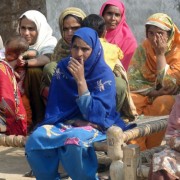
Comment
Make a general inquiry or suggest an improvement.